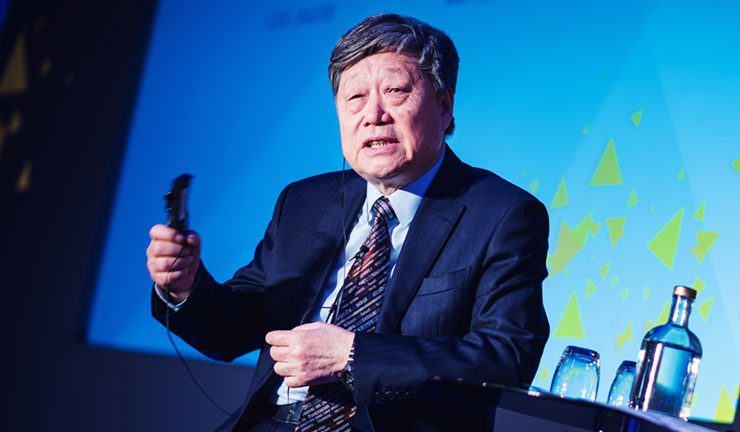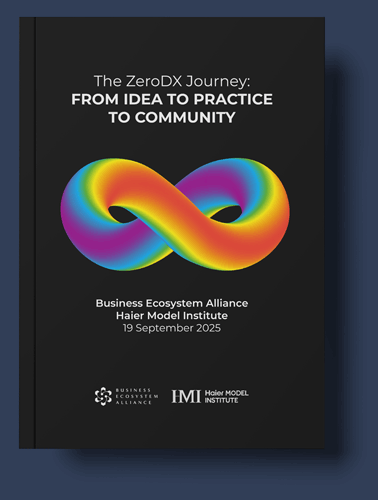
CLOSER AND CLOSER: FROM CUSTOMER-CARE TO ZERO DISTANCE
The Practice of Management by Peter Drucker was published 70 years ago. In it, Drucker observed that the purpose of a company was to create a customer. It is one of those truisms which is now regularly trotted out but, at the time, it largely appeared without comment. Indeed, attention to customers was not a notable feature of Western corporations of the 1950s, 1960s or 1970s.
It was only in the 1980s that corporations were re-awakened to the power of customers. At the time bad news stalked every corner. The death knell of post-war industrial optimism and unquestioning faith in the mighty corporation was sounding. Only the profoundly deaf carried on regardless — and there were many who chose to ignore the signals.
As the death knell rang out, there was no shortage of obituary notices. In 1980 two Harvard Business School academics, Robert Hayes and Bill Abernathy, published “Managing our way to economic decline” in the Harvard Business Review. It proved grim and highly influential reading. “Our experience suggests that, to an unprecedented degree, success in most industries today requires an organizational commitment to compete in the marketplace on technological grounds — that is, to compete over the long run by offering superior products,” wrote Hayes and Abernathy. It is astounding in retrospect that such commercial facts of life needed re-stating. The duo went on to champion customer orientation as a vital ingredient in reversing the apparently irreversible trend.
At the same time a TV documentary in the United States brought the work of an obscure statistician called W. Edwards Deming to broader attention. For Deming, the customer was king, emperor, CEO and dictator. Or, as he phrased it, “the consumer is the most important part of the production line”. Quality is defined by the customer. Inspired, Western managers looked to Japan. There they discovered systems and processes driven by the three Cs — the corporation, the customer, and the competition.
All of these messages were then amplified by the first management blockbuster In Search of Excellence by Tom Peters and Robert Waterman which put customers back at the centre of the corporate stage.
That was in 1982. We have been making better sense of customers ever since. In the 1990s we celebrated Toyota’s production system based on three principles: just-in-time production, responsibility for quality rests with everyone and any quality defects need to be rectified as soon as they are identified, and the “value stream” (instead of seeing the company as a series of unrelated products and processes, it should be seen as a continuous and uniform whole, a stream including suppliers as well as customers).
And from there it was an easy leap to GE’s practice of Six Sigma which spread the responsibility for quality. Instead of being a production issue it was re-cast as an issue for every single person in the company.
Next up was the notion of mass customization, creating a direct line to customers. “To all our nit-picky – over demanding – ask-awkward questions customers. Thank you, and keep up the good work,” read one Dell advertisement. “You actually get to have a relationship with the customer,” explained Michael Dell at the time of the company’s irresistible rise. “And that creates valuable information, which in turn allows us to leverage our relationships with both suppliers and customers. Couple that information with technology and you have the infrastructure to revolutionize the fundamental business models of major global companies.”
And now we have reached a point where the link between employees and customers is vanishingly small. In their new book Proximity, Rob Wolcott and Kaihan Krippendorff map out this fast changing relationship, a world of instant fulfilment: “Digital technologies push the production and provision of value—products, services and experiences—ever closer to the moment of demand. Not predicted demand, not forecasted demand, but real, ready-to-pay-for-it demand.”
Among the examples cited by Wolcott and Krippendorff is that of the Chinese white goods company Haier. During the pandemic it developed a concept which enabled Chinese consumers to enjoy traditional Peking duck cooked to a chef’s recipe in their own ovens in their own homes. This is the internet of food, a world where chefs, farmers and consumers exist in a mutually beneficial ecosystem characterized by all-but-instant delivery.
For Haier narrowing the gap between employees and consumers has become a guiding philosophy. Its concept of Zero Distance, championed by its long-time CEO Zhang Ruimin (now the company’s chairman emeritus) emphasizes the connection between the business and the end-user or customer. This has become central to the management model of the Internet of Things era.
In 2015, “Zero Distance to the Customer” was published as a Harvard Business School case. It made the principles of Zero Distance clear:
- Having a management philosophy that allows the organization to proactively react to newly identified user needs
- An organizational design and processes that eliminate organizational barriers that separate employees from end users
- The use of user-focused and independent teams that can move fast and smoothly within the organization
- End-to-end accountability for the experience of end users is taken by the company and/or independent teams
- The systematic collection, storage and use of end user data in order to increase value for end users
- Commitment to the ecosystem principles of openness, equality, co-creation and co-sharing.
Michael Dell’s prediction of revolutionizing the “fundamental business models of major global companies” is coming to pass.
To develop and share the idea of Zero Distance and its broader management philosophy of RenDanHeYi, Haier hosts an annual forum featuring distinguished speakers like Gary Hamel, Rosabeth Moss Kanter, Bill Fischer, Edmund Phelps, Eric Maskin, Oliver Hart, Bengt Holmstrom, and Brian Arthur. This September marks the 8th edition of the forum, taking place in Haier’s hometown, Qingdao, on September 20.
This year, the focus shifts from Haier and its management model to celebrating the world’s most progressive organizations. Working with the Business Ecosystem Alliance and the Management Lab, the Haier Model Institute will release the inaugural listing of the progressive companies which are putting Zero Distance and related ideas into practice (organizations can enter here).
These organizations are characterized by:
- A highly decentralized structure with minimal formal hierarchy.
- Self-managing teams with autonomy and authority to make decisions, directly interacting with customers.
- Teams accountable for their results, with all employees sharing in the organization’s success.
This is what the progressive organizational future looks like. But, its founding principle is that first expressed by Peter Drucker back in the 1950s.
About the author:
Stuart Crainer is the cofounder of Thinkers50.


